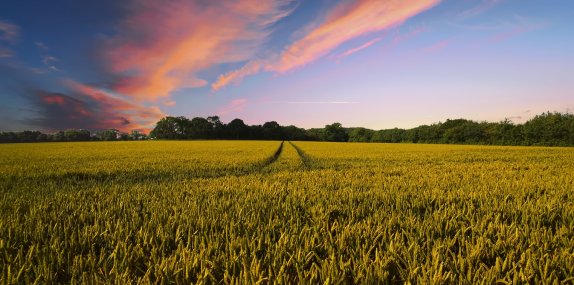
Looking at previous World Forum on Natural Capital blogs, to get inspiration for my own, I noticed the relative dearth of articles considering natural capital itself, particularly the ways in which it functions to deliver ecosystem services. As a plant ecologist, this appeared an empty niche. So I want to take this opportunity to give an outline of the type of work scientists do to understand how our natural capital – and in particular the critical component that is biodiversity - delivers ecosystem functions and services, and the important role that studies of crop systems can play in understanding natural capital and its role in our economy and society.
Biodiversity is commonly described as the diversity of organisms, including genes, species, and habitats. Biodiversity research seeks to understand the causes and consequences of biodiversity in natural systems: how do we end up with the range of organisms that we see in environments across the world, and does this diversity regulate how ecosystems function? Functions of an ecosystem can be processes such as water collection and purification, decomposition, and the “production” of plants and animals. An ecosystem’s resilience is also considered an ecosystem function.
Biodiversity-function relationships have been the focus of a huge amount of research, but many questions remain unanswered. For example, what components of biodiversity are most important for particular functions, and how much can we lose before vital functions stop working? Answers are elusive, in part because our natural world is astonishingly complex and relationships can be context specific. What’s important in one habitat may be irrelevant in another.
To explore biodiversity-function relationships, researchers commonly alter the biodiversity of an ecosystem and then assess the consequences for ecosystem functions. If we remove certain plant species or types – grasses, mosses, shrubs – what’s the impact on overall productivity or soil processes such as carbon storage and decomposition? Whilst we can do single-system studies relatively easily, it takes much longer – and many studies – to build up a good understanding of global patterns, particularly in a world that is rapidly changing. But over recent years it has become clear that often it is variation in the characteristics (traits) of organisms that is important, not the number of species or genes. Importantly, there’s not a simple relationship between species diversity and trait diversity: adding more species with similar traits does little to alter ecosystem function.
This type of research has often focussed on more natural systems such as species-rich hay meadows. But what about heavily managed systems, such as those that produce crops? Crops systems are, in fact, excellent locations for undertaking this type of work. Practically, they are (relatively) easy to work with; many intensive agricultural systems are comparatively simple, and when working with annual crops we can run experiments in a couple of months. And, because of intensive work done for plant breeding, we have a lot of material to work with. If we want to build plant communities that combine different levels of diversity in terms of genes, species and traits, this is more straightforward than in many natural systems. Importantly, crop systems also provide a direct path for linking fundamental science to pressing real-world problems. Understanding how to put crops together to use available resources more efficiently, or be more resilient, helps to address the critical challenge of delivering more sustainable farming systems.
Such research is underway globally, but a good home-grown example - as the World Forum returns to Edinburgh - is found in the current five-year Scottish Government Strategic Research Programme, where ecologists, plant physiologists and nutritionists, and crop pathologists, are coming together to understand the role of diversity in crop systems. We use mixtures of varieties of cereals (often barley), or mixtures of cereals and other crops such as leguminous peas and beans, to explore how the composition of mixtures affects crop functions including productivity and resilience. We have found – for example – that under some circumstances stands with a mixture of barley varieties show genuine complementarity (that is, the plants in a mixed stand “fit together” better), and that more diverse agricultural weed communities can limit the influx of new species, particular rare plant species. Researchers are also exploring the natural capital resource locked up within traditional crop varieties such as Scotland’s bere barleys. There are also clear opportunities to link new knowledge to practical application in the field. For example, the Horizon-2020 (EU) funded DIVERSify takes an ecological approach to crop improvement, linking ecologists, crop breeders and agricultural technologists across Europe to build better “plant teams”.
So, as stakeholders get together at the World Forum in November, and perhaps indulge in a single malt or one of Scotland’s excellent craft ales, raise a glass for the research work going on to make the natural capital supporting these excellent home-grown products more sustainable for the future.
Dr Rob Brooker is a plant ecologist at the James Hutton Institute, with over 16 year's experience of ecological research. He is a member of the Biodiversity Science Group of the Scottish Biodiversity Forum, and the Public and Policy Committee of the British Ecological Society.
Share this page: